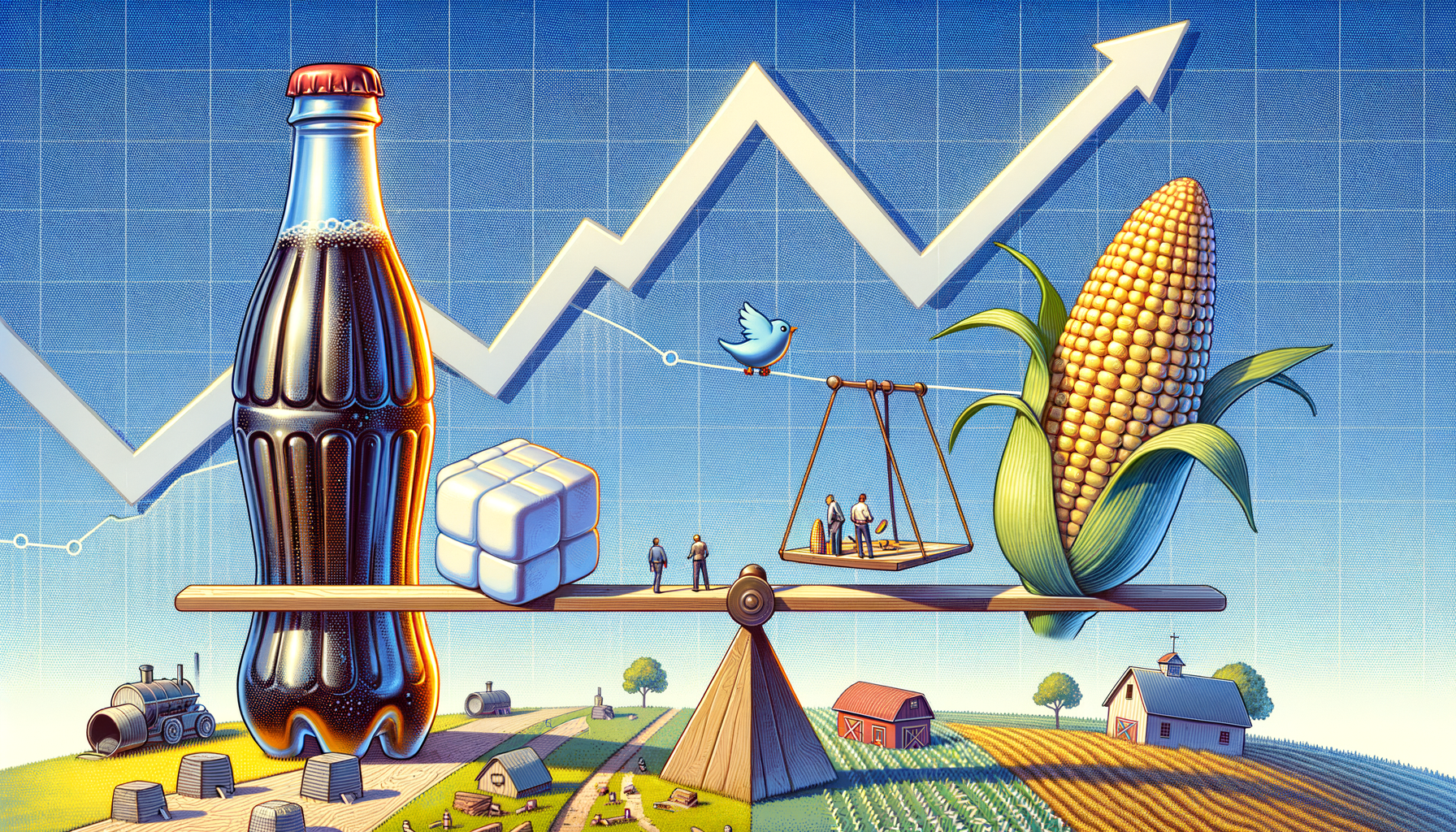Did Coca-Cola Really Cave to Trump’s “Real Sugar” Demand?
Short answer: No. Coca-Cola has not promised to swap its U.S. recipe from high-fructose corn syrup (HFCS) to cane sugar. The only pledge on record is Donald Trump’s own Truth Social post. Yet that single message still shaved more than a billion dollars off corn-industry stocks and reignited America’s long-simmering “sugar war.”
Read on to see how a 46-word social-media blast rattled Wall Street, baffled Coke executives, and dragged farm subsidies, Brazilian tariffs, and Robert F. Kennedy into one sticky story.
1. The Post That Jolted the Corn Belt
“I have been speaking to Coca-Cola about using REAL Cane Sugar in Coke in the United States, and they have agreed to do so.”
At 7:02 a.m. Wednesday, that claim shot out from Donald Trump’s Truth Social account. Within minutes:
- Archer Daniels Midland (ADM), America’s biggest corn processor, fell nearly 6 % pre-market — roughly a $1.5 billion paper loss.
- Ingredion, another HFCS giant, slid almost 7 %.
- Reporters flooded Coca-Cola’s press inbox looking for confirmation. None came.
Sources: CNBC, Washington Post
2. What Coca-Cola Actually Said — and Didn’t
Coca-Cola’s public statement was diplomatic, even flattering:
“We appreciate President Trump’s enthusiasm for our iconic Coca-Cola brand… More details on new innovative offerings will be shared soon.” – Coke spokesperson
Notably missing:
- Any phrase like “we agreed”
- A timetable or even an intention to reformulate U.S. Coke
The company later fired off a defensive X/Twitter thread explaining that HFCS is “safe” and “metabolized in a similar way” to sugar — a polite corporate reminder that cane sugar is also just… sugar.
3. Jobs, Tariffs and a $3 Billion Question
Trump framed his push as a quality upgrade. Corn interests saw an economic earthquake.
Corn Refiners Association CEO John Bode warned of:
- “Thousands of lost manufacturing jobs”
- Lower farm income
- Increased sugar imports
Bode’s language is real — it appears verbatim in AP, Axios, and CNBC. But the scale of the fallout is speculation; Coca-Cola alone switching sweeteners would not erase HFCS from thousands of other products lining U.S. grocery aisles.
Complicating matters, Trump recently announced:
- A blanket 50 % tariff on all Brazilian imports — Brazil is a top sugar exporter.
- A universal 10 % “baseline” tariff on other nations.
If Coke truly wanted foreign cane sugar, it would pay a hefty premium under those rules, undercutting any price benefit over domestic HFCS.
Subsidies add more knots. The original article said U.S. sugar companies get $4 billion a year in subsidies. Government Accountability Office reports peg the net cost to consumers/producers closer to $2.5–3.5 billion — still steep, but not quite four.
Sources: GAO, CNBC on tariffs
4. The Great Taste Debate: Mexican Coke vs. American Coke
Why does this matter to drinkers?
- Mexican Coke (sold in tall glass bottles) uses cane sugar. Many fans swear it tastes “cleaner” or “brighter.”
- U.S. Coke switched to HFCS in 1984–85 to cut costs when corn became king.
Scientifically, both sweeteners deliver almost identical calories; the American Medical Association says HFCS is no more obesogenic than table sugar. But flavor chemists point out minor fructose/glucose ratio differences that may tweak mouthfeel.
If Coca-Cola did adopt cane sugar, the U.S. product would taste more like its Mexican cousin — and likely cost more thanks to those tariffs and price supports.
5. Political Theater, Red Buttons and Epstein Files
• Trump’s legendary “Diet-Coke button” on the Resolute Desk? True, documented by AP and Snopes.
• California Governor Gavin Newsom couldn’t resist sarcasm:
“Oh thank god! I’ve totally forgotten about the Epstein files now!” — a real X post, pulling 5 million views in 24 hours.
• Health and Human Services Secretary Robert F. Kennedy (no relation to RFK Jr.) chimed in months earlier, calling sugar “poison” “as addictive as crack.” That rhetoric now ricochets across the debate, providing cover for either side’s health claims.
6. Verified, Unverified, Flat-Out Wrong
| Status | Claim | Notes |
|---|---|---|
| ✅ Verified | Trump posted that Coke “agreed” | Multiple outlets archived the post |
| ⚠️ Unverified | Coke will switch to cane sugar | Company has not confirmed |
| ✅ Verified | Stock-price plunge for ADM/Ingredion | Matches market data |
| ❌ Overstated | “$4 billion” direct sugar subsidies | Best evidence: $2.5–3.5 billion consumer cost |
7. So Where Does That Leave Your Coke?
Right now:
- Recipe: Unchanged. Grab any can in a U.S. store — HFCS is still ingredient #2.
- Corporate stance: “No promises, no timeline.”
- Market fallout: Real; corn-refiner shares remain bruised.
- Political upside for Trump: A day’s worth of headlines, culture-war cachet, and another reason to press the Diet-Coke button.
Until Coca-Cola files an official formula change with the FDA (yes, they’d have to), everything else is fizz and bubbles.
Bottom Line
Trump’s social-media megaphone can indeed move markets — but at least for now, it hasn’t moved the syrup pump inside America’s Coke bottling plants. If the day ever comes when U.S. Coke tastes just like the glass-bottled Mexican version, it won’t be because of a single Truth Social post. It will be the result of tariff math, subsidy politics, farm-state lobbying, and a secret recipe that has stayed stubbornly sweet — no matter who’s sitting in the Oval Office.
